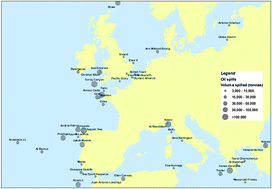Compositional properties characterizing commonly transported oils and controlling their fate in the marine environment†
Abstract
Oil spills relating to shipping incidents remain of substantial concern with respect to marine pollution. Whilst most frequently a reactive approach is adopted in post-incident monitoring (for the specific product involved), this paper reports important physical and compositional characteristics of commonly transported oils and oil products to afford pro-active assessments. These properties include specific gravity, viscosity, elemental composition and, of particular relevance, the relative class compositions between aliphatics, aromatics, resins and asphaltenes. The latter were determined experimentally using thin layer


 Please wait while we load your content...
Please wait while we load your content...